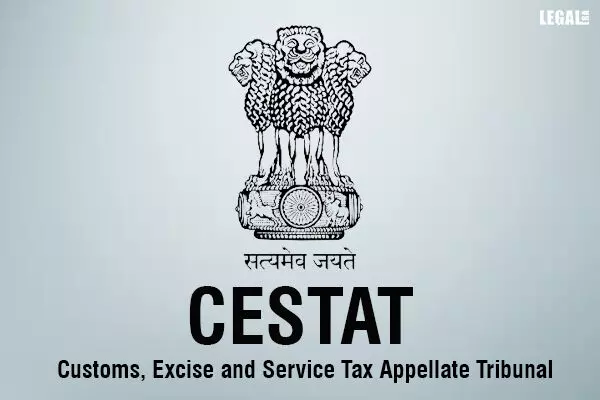- Home
- News
- Articles+
- Aerospace
- AI
- Agriculture
- Alternate Dispute Resolution
- Arbitration & Mediation
- Banking and Finance
- Bankruptcy
- Book Review
- Bribery & Corruption
- Commercial Litigation
- Competition Law
- Conference Reports
- Consumer Products
- Contract
- Corporate Governance
- Corporate Law
- Covid-19
- Cryptocurrency
- Cybersecurity
- Data Protection
- Defence
- Digital Economy
- E-commerce
- Employment Law
- Energy and Natural Resources
- Entertainment and Sports Law
- Environmental Law
- ESG
- FDI
- Food and Beverage
- Gaming
- Health Care
- IBC Diaries
- In Focus
- Inclusion & Diversity
- Insurance Law
- Intellectual Property
- International Law
- IP & Tech Era
- Know the Law
- Labour Laws
- Law & Policy and Regulation
- Litigation
- Litigation Funding
- Manufacturing
- Mergers & Acquisitions
- NFTs
- Privacy
- Private Equity
- Project Finance
- Real Estate
- Risk and Compliance
- Student Corner
- Take On Board
- Tax
- Technology Media and Telecom
- Tributes
- Viewpoint
- Zoom In
- Law Firms
- In-House
- Rankings
- E-Magazine
- Legal Era TV
- Events
- News
- Articles
- Aerospace
- AI
- Agriculture
- Alternate Dispute Resolution
- Arbitration & Mediation
- Banking and Finance
- Bankruptcy
- Book Review
- Bribery & Corruption
- Commercial Litigation
- Competition Law
- Conference Reports
- Consumer Products
- Contract
- Corporate Governance
- Corporate Law
- Covid-19
- Cryptocurrency
- Cybersecurity
- Data Protection
- Defence
- Digital Economy
- E-commerce
- Employment Law
- Energy and Natural Resources
- Entertainment and Sports Law
- Environmental Law
- ESG
- FDI
- Food and Beverage
- Gaming
- Health Care
- IBC Diaries
- In Focus
- Inclusion & Diversity
- Insurance Law
- Intellectual Property
- International Law
- IP & Tech Era
- Know the Law
- Labour Laws
- Law & Policy and Regulation
- Litigation
- Litigation Funding
- Manufacturing
- Mergers & Acquisitions
- NFTs
- Privacy
- Private Equity
- Project Finance
- Real Estate
- Risk and Compliance
- Student Corner
- Take On Board
- Tax
- Technology Media and Telecom
- Tributes
- Viewpoint
- Zoom In
- Law Firms
- In-House
- Rankings
- E-Magazine
- Legal Era TV
- Events
CESTAT: Admissibility Of Discounts To Buyers After Clearance Is Eligible Deduction To Determine Assessable Value

CESTAT: Admissibility Of Discounts To Buyers After Clearance Is Eligible Deduction To Determine Assessable Value
Sets aside the order and allows the assessee’s appeal
The Kolkata bench of the Customs, Excise and Service Tax Appellate Tribunal (CESTAT) has held that the admissibility of discounts passed on to the buyers and known at the time of clearance of goods is eligible deduction for determining the assessable value.
The bench of Ashok Jindal (judicial member) and Rajeev Tandon (technical member) observed that the rebate, known as Movement Plan Rebates (MPR) uniformly passed, was required for the determination.
The appellant/assessee manufactures iron and steel articles such as pig iron, ingots, blooms, angles, and channels. These fall under Chapter 72 and Chapter 73 of the Central Excise Tariff Act, 1985. The products are sold at the factory gate, depots and branch sales offices for further sale through stock transfers.
The appellant submitted that the rates were determined by its Central Marketing Organization (CMO), which decided the price at which the goods were sold from the plant and the sales offices.
The assessee added that the CMO allowed the plant and the sales offices to provide further discounts to buyers uniformly on the prices indicated in the list. This was done to match the prices of the competitors at various places. Thus, at the time of the sale of goods, the price list was adjusted by giving MPR.
The MPR was decided by a high-powered committee comprising the Director-Finance, Director-Commercial, and CEOs of the five integrated steel plants of the appellants, and other representatives such as the ED, Marketing and ED, F&A.
The appellant apprised that calculating the MPR was a scientific and commercial process. The rebate was allowed during the trade on direct sales and dispatches to the stockyards and was non-refundable by the buyers. Under Rule 11 of the Central Excise Rules, 2002, it was shown separately on the invoices.
Thus, while supporting the adjudication order, the department contended that the price adopted by the appellants could not be construed as the normal transaction value. As per Section 4(1) of the Central Excise Act, 1944, the assessable value was the transaction value at which the goods were sold by the assessee for delivery. The transaction value was the actual price paid for the goods.
However, in the present case, since the goods were not sold from the factory gate, and the depot/BSO was the actual place of sale, the assessable value would be determined under Section 4(1)(a) under the provisions of Section 4(1)(b), read with Rule 7 of the Valuation Rules. It catered to the sale of goods from a depot to non-related buyers with price being the sole consideration.
Under Rule 7 of the Valuation Rules, any discount given at the time of clearance of goods is allowed for the assessment of goods transferred to the BSO when the same is passed on to the final customers.
The CESTAT noted that the goods were sold from the depots after allowing such MPRs. The certificates submitted by the chartered accountant established that the aggregate value of the MPRs allowed from the depot exceeded the MPRs as claimed by the appellant.
Thus, the tribunal set aside the order and allowed the assessee’s appeal.



